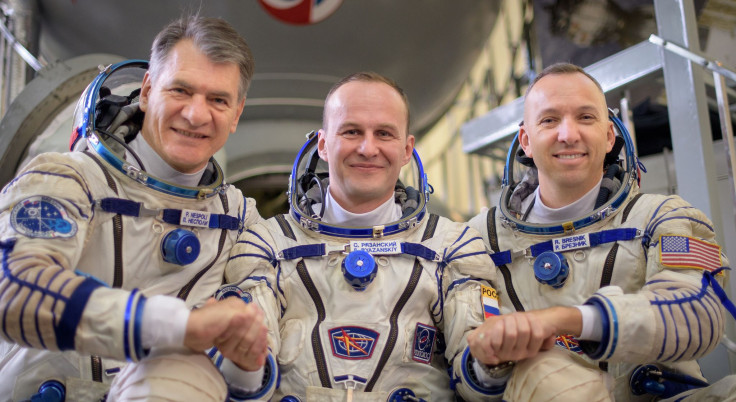SpaceX Launching More Materials To Grow Food On International Space Station

Now that there are three new astronauts on the International Space Station, the crew has double the amount of workers to do experiments unique to the conditions of space. On Aug. 13, NASA and SpaceX will work together to send nearly 6,000 pounds worth of supplies up to the station for the crew.
During Expeditions 52 and 53, the crew members involved will conduct more than 250 scientific and research investigations on the station, says NASA. The work done on those missions is helping further the human and robotic exploration of space as well as conduct research to further efforts done on Earth.

Read: NASA's Historic Mission Control Room In Houston Will Be Restored
There are hundreds of experiments going on the station, a full list can be viewed online. They include an experimental water purification and collection system that could potentially be used in future space travel along with the Veggie plant growth system that launched in 2014.
The growth system is part of the first experiments involving plant growth in space. The Veggie system was installed in the Columbus module of the station more than three years ago but the Dragon resupply mission will include “plant pillows” for the experiment.
These plant pillows are used inside of the Veggie system and given measured amounts of water and controlled light. They contain red romaine lettuce seeds, a growth media and a type of clay that helps aeration. The system actually works and astronauts even eat the lettuce it produces.
It was one small bite for man, one giant leap for #NASAVEGGIE and our #JourneytoMars. #YearInSpacehttps://t.co/B7Gkfm1Vz0
— Scott Kelly (@StationCDRKelly) August 10, 2015
The Veggie system is just one NASA is working on the help prepare for deep space missions that will have to be self-sustaining in the future like those to Mars or deep space.
Read: Recycling Water In Space: NASA Working On New Evaporation, Purification System
The launch of experiments and supplies is currently scheduled to take place at 12:56 p.m. EST from the same launch pad at the Kennedy Space Center where historic missions like Apollo 11 and 13 launched from, pad 39A. SpaceX will launch the payload held in a Dragon spacecraft with one of its Falcon 9 rockets, which are designed to be reused. SpaceX will attempt to recover the first stage of the rocket via controlled landing at the Cape Canaveral Air Force Station after launch.
Once the payload reaches preliminary orbit the solar arrays on board will deploy. Its thrusters will guide it to the space station where NASA astronaut Jack Fischer and European Space Agency astronaut Paolo Nespoli will grapple the Dragon craft and connect it to the Harmony module.
Once the Dragon craft is securely connected the astronauts will unload it and begin using its contents for experiments on board. It will stay connected to the station for about a month before it is loaded up with completed past experiments and sent back to Earth.
On August 13 the launch to the ISS will be broadcast live on NASA's website as well as on their YouTube channel.
© Copyright IBTimes 2024. All rights reserved.





















